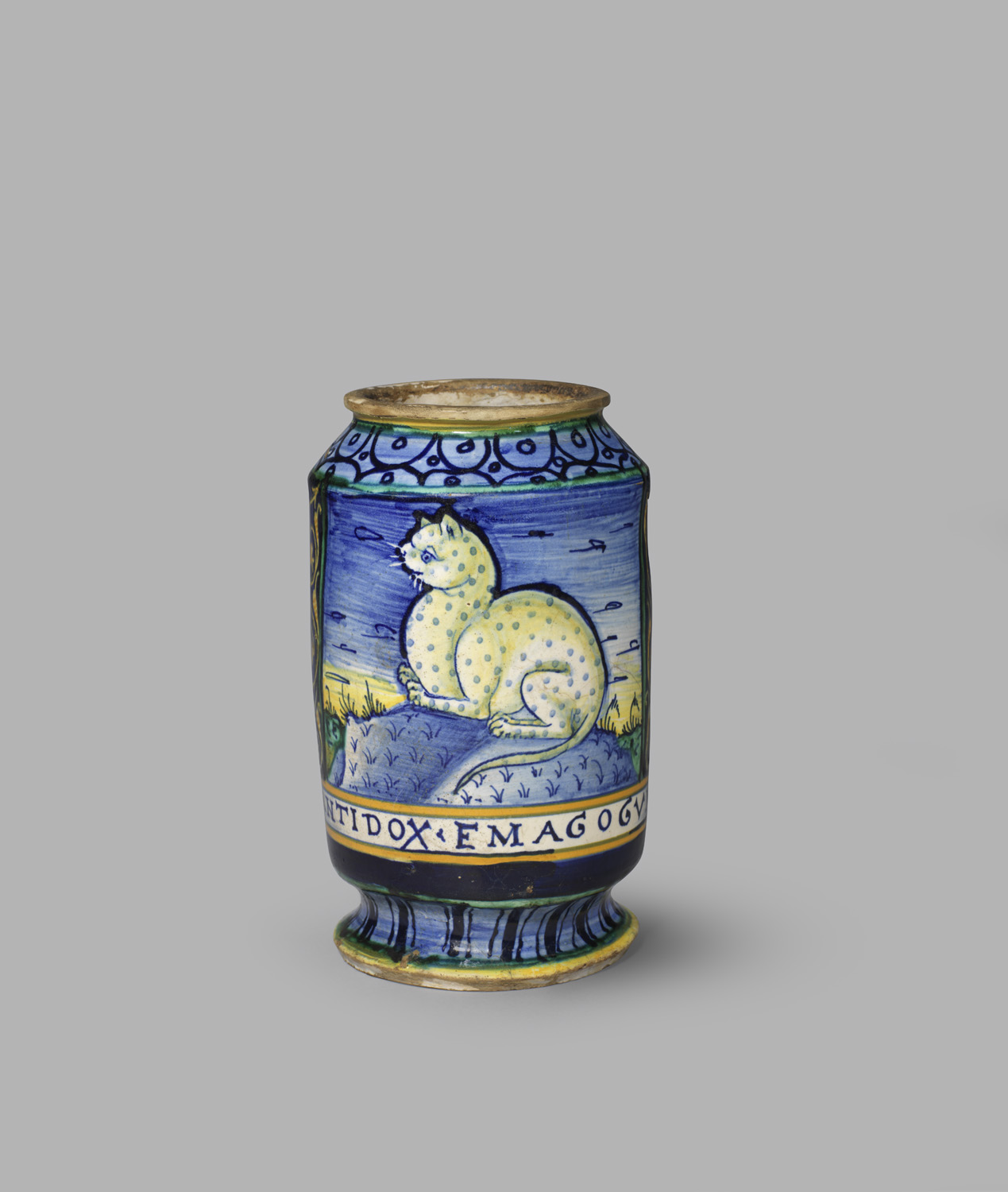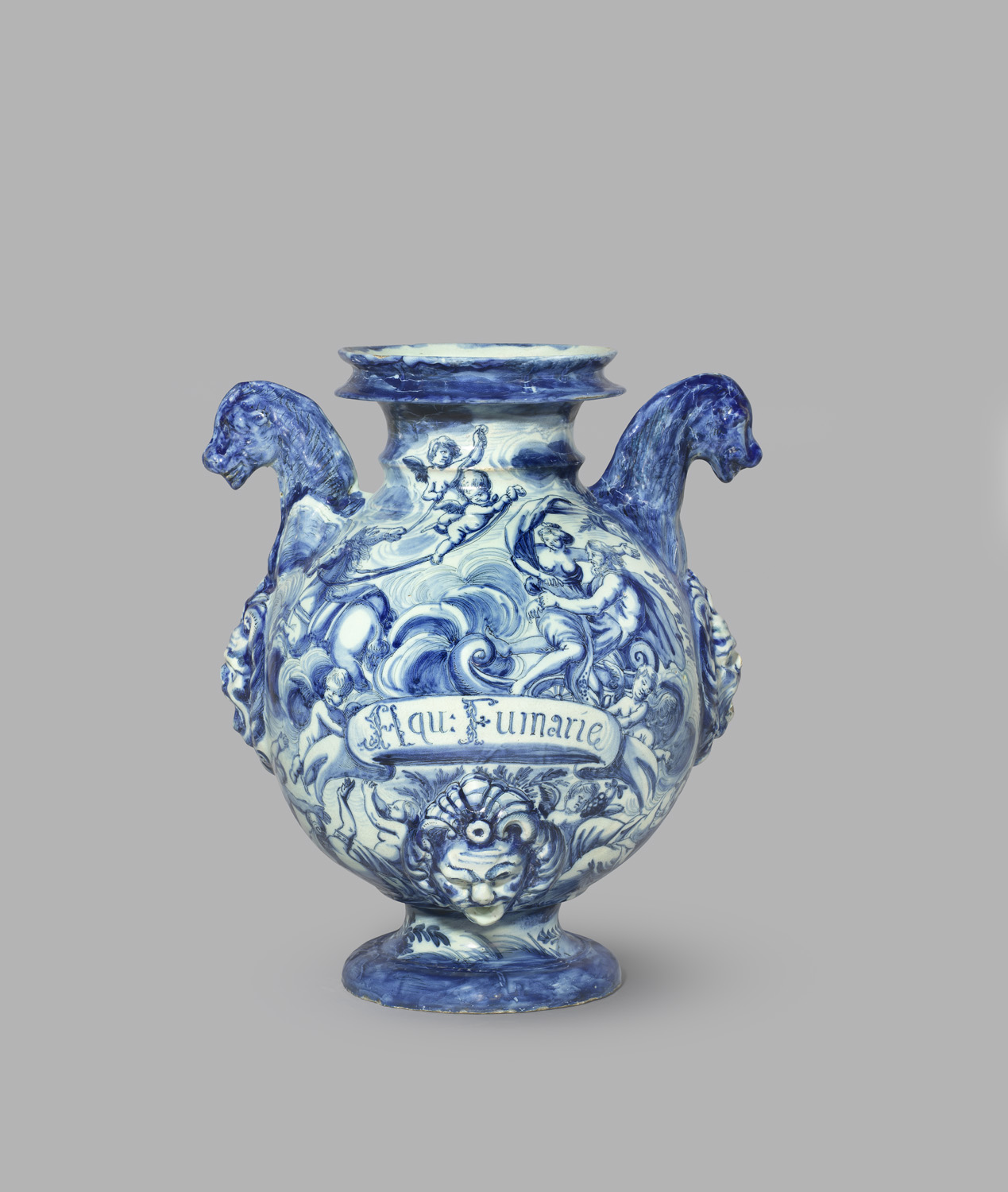In terms of use, Renaissance pharmacy jars are not that different from the labelled bottles filled with syrup or pills found in pharmacies today. These jars were primarily used to preserve ingredients or prepared remedies in solid or liquid form. As mentioned, pharmacy jars were mainly earthenware pottery covered with a tin glaze and painted with vivid colours. The tin oxide in the glazing was used as an opacifier to block and prevent light from damaging the ceramic body. However, it may also have had chemical reactions with the substances contained in the jar; in fact, fragmented glazing can be seen on the inside surface of the pharmacy jar we selected for this project. Those reactions could result in a loss of the active ingredient which might convert to different compounds and thus compromise the therapeutic effect of the medicine; even worse, they could introduce toxic impurities and cause adverse effects.
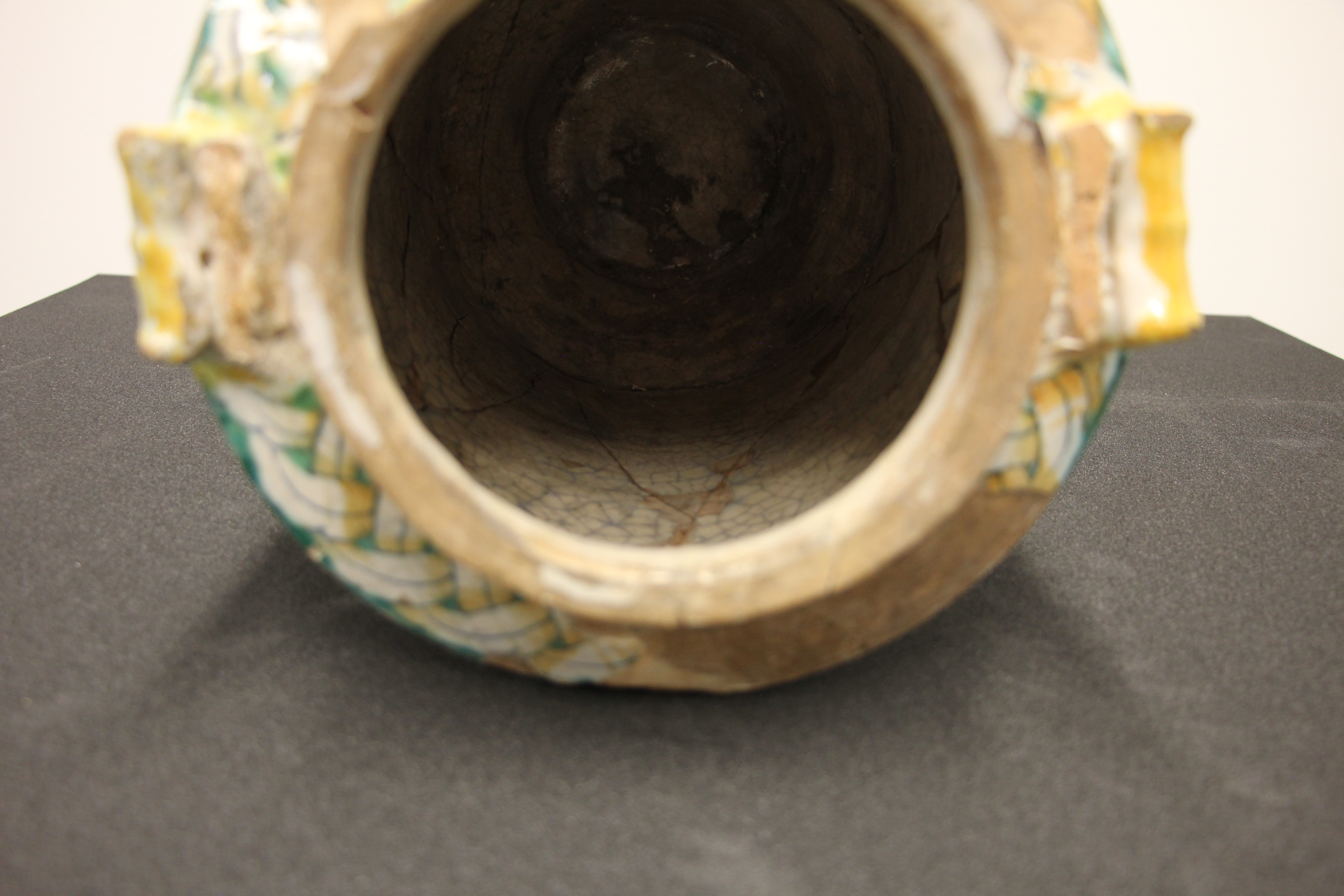
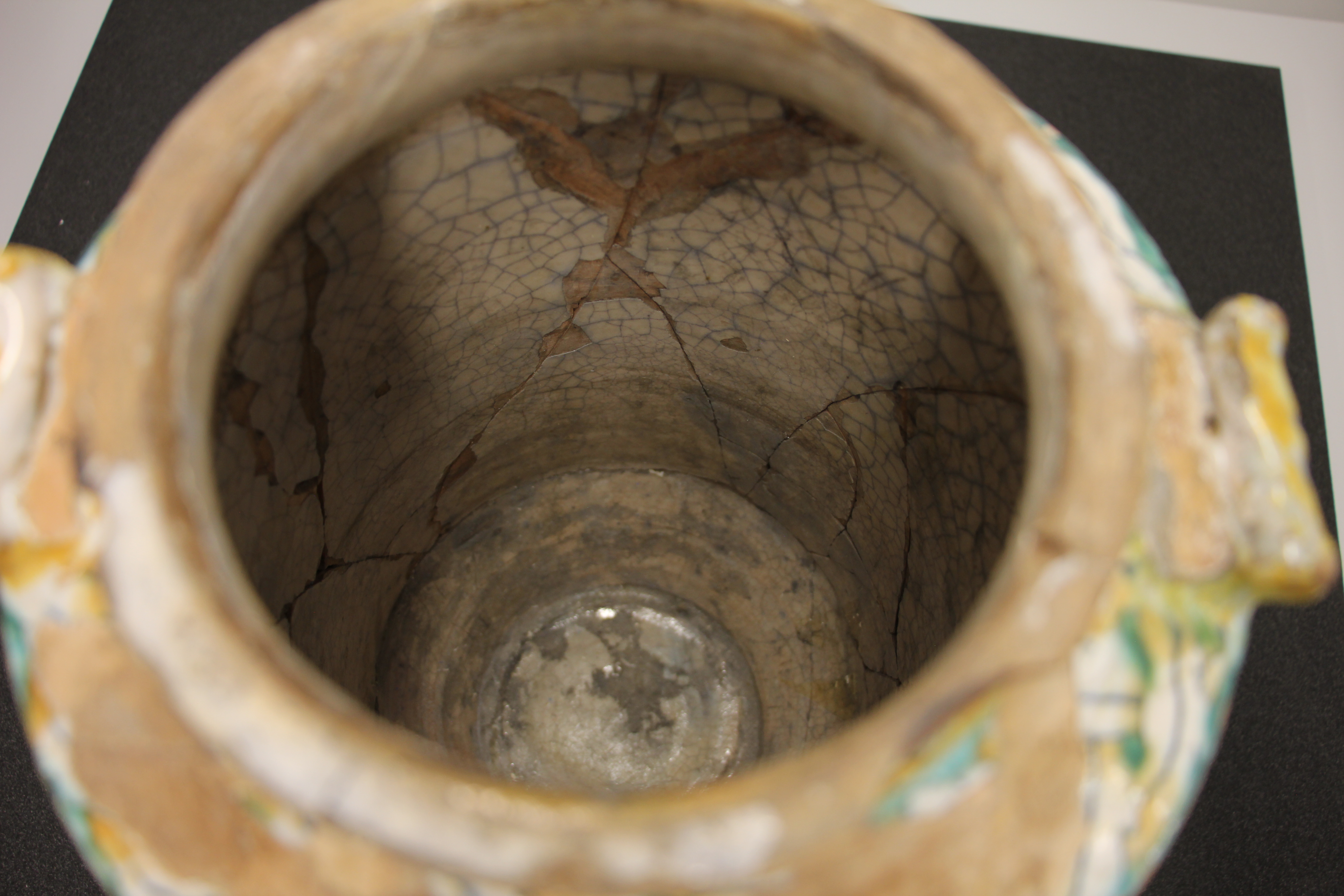
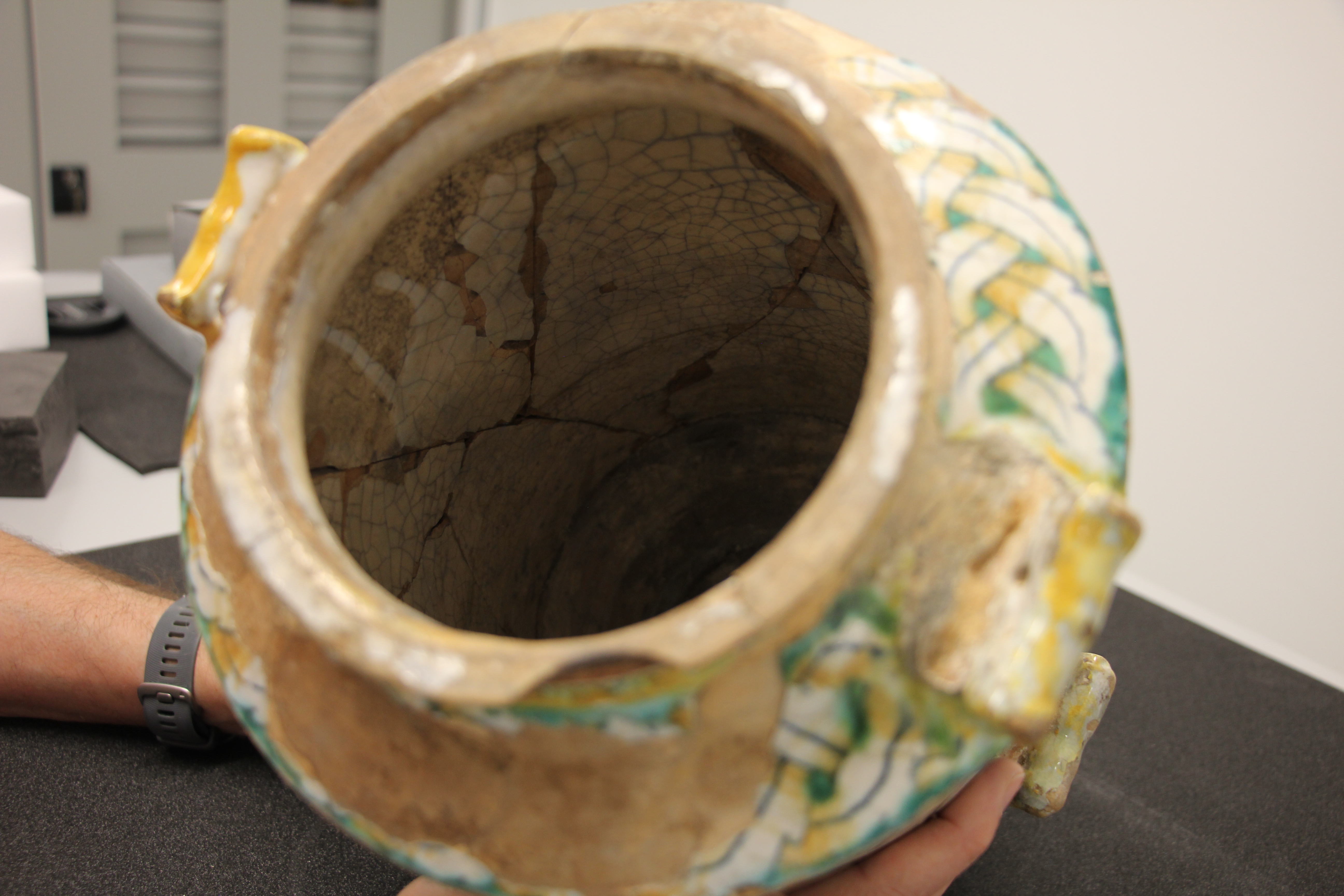
Close-up images of the pharmacy jar (inside). Photo © The Courtauld.
The size of most pharmacy jars suggests that they usually served as a reservoir for ingredients, which pharmacists would distribute into specific dosages, according to a given prescription. The shape of these vessels also provides some clues about their use. This one has a cylindrical shape with no spout (called in Italian an albarello), which indicates that it was meant to store solid materials rather than liquids. It originally had handles (which are today missing), and these were used to carry the jar, which when filled would have been useful. The jar has a short neck with an everted rim on the top. It does not have a fitted lid, which one might assumed such a storage jar would have had. However, instead of a ceramic lid, it was probably sealed at the top by a piece of parchment, which practitioners of the pharmacy would secure with some string.
Most of these jars, such as the beautiful examples displayed the permanent galleries at The Courtauld, have inscriptions on the front specifying what their content would be.
Although they only displayed the name of the materials contained inside, these inscriptions can be considered as functional labelling. This is not the case with our jar. The mysterious and intriguing writing on the scroll is unlikely to be associated with medicinal or culinary ingredients. So, what could this inscription mean? Our study of the mysterious vessel was initially inspired by the labels on modern medicinal products. Placed on the package, modern drug labels can provide comprehensive information for pharmacists and patients: the name of the active ingredients, the dosage form (tablets, powder, liquid for injection, etc.) and usually a brief instruction on how the drug should be taken. The last part of the information is the key to ensuring the drugs are prescribed, distributed and administered appropriately.
Labelling and storage are at the core of pharmaceutics, a discipline of pharmacy that turns active compounds into formulations ready for clinical use. The pharmaceutical perspective further inspired us to seek out different interpretations of the inscription on this jar. Could it accidentally resemble a modern drug label, with hidden instructions, or even a warning about the application of its ingredient’s?

